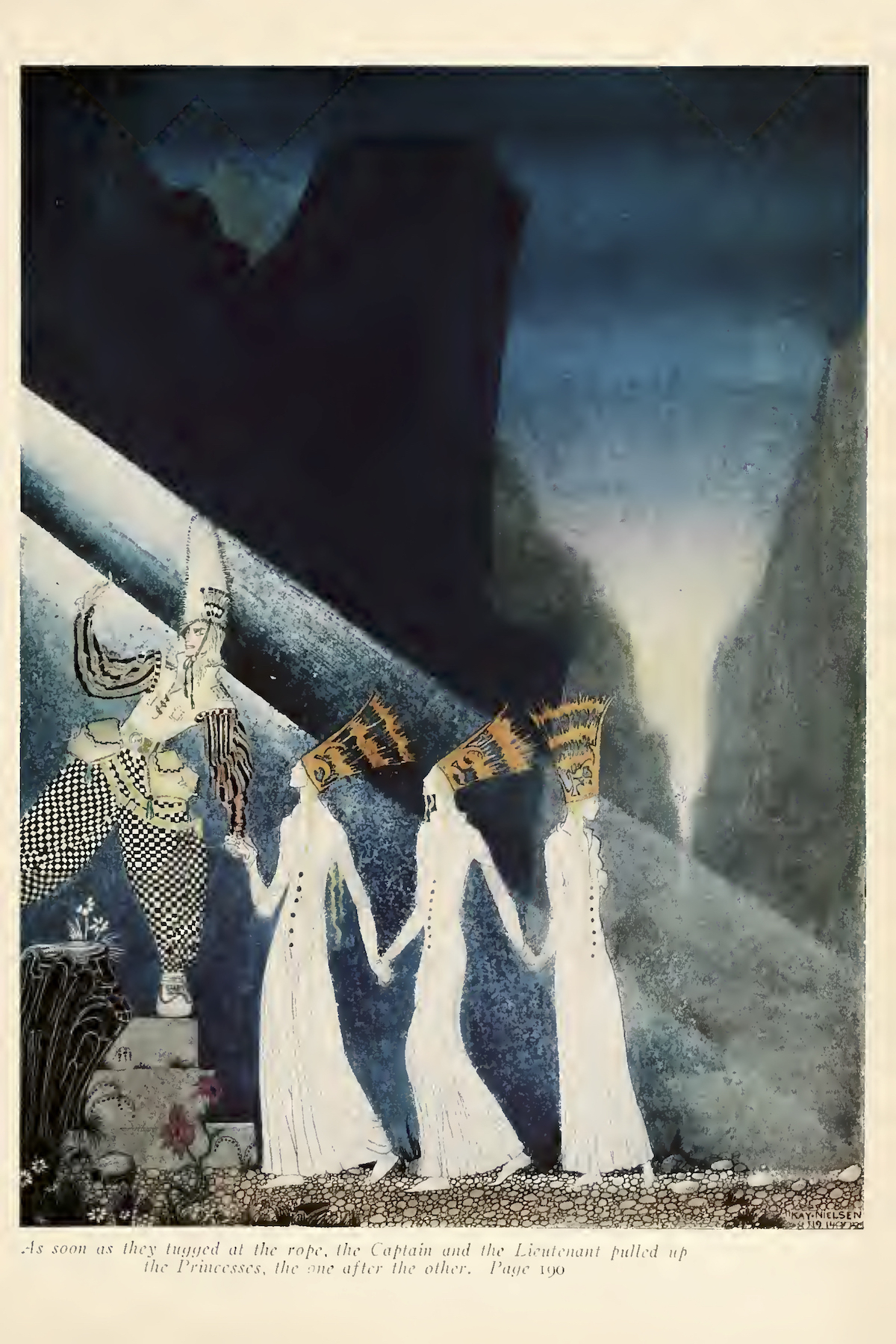Kay Nielsen (March 12, 1886 – June 21, 1957) was a Danish illustrator best known for his work for Disney, for whom he contributed many story sketches and illustrations, not least the nightmarish, eerie and delicate Bald Mountain scenes for the animated movie Fantasia (1940).
But what interests us here are his 25 colour plates and more than 21 monotone images for the children’s collection East of the Sun and West of the Moon (1914). Reminiscent of the magically romantic work of Arthur Rackham and Edmund Dulac in use of Art Nouveau with oriental influences, these exceptional colour images inspired by Norwegian folklore were reproduced by a 4-colour process, in contrast to many of the illustrations prepared by his contemporaries that characteristically utilised a traditional 3-colour process.
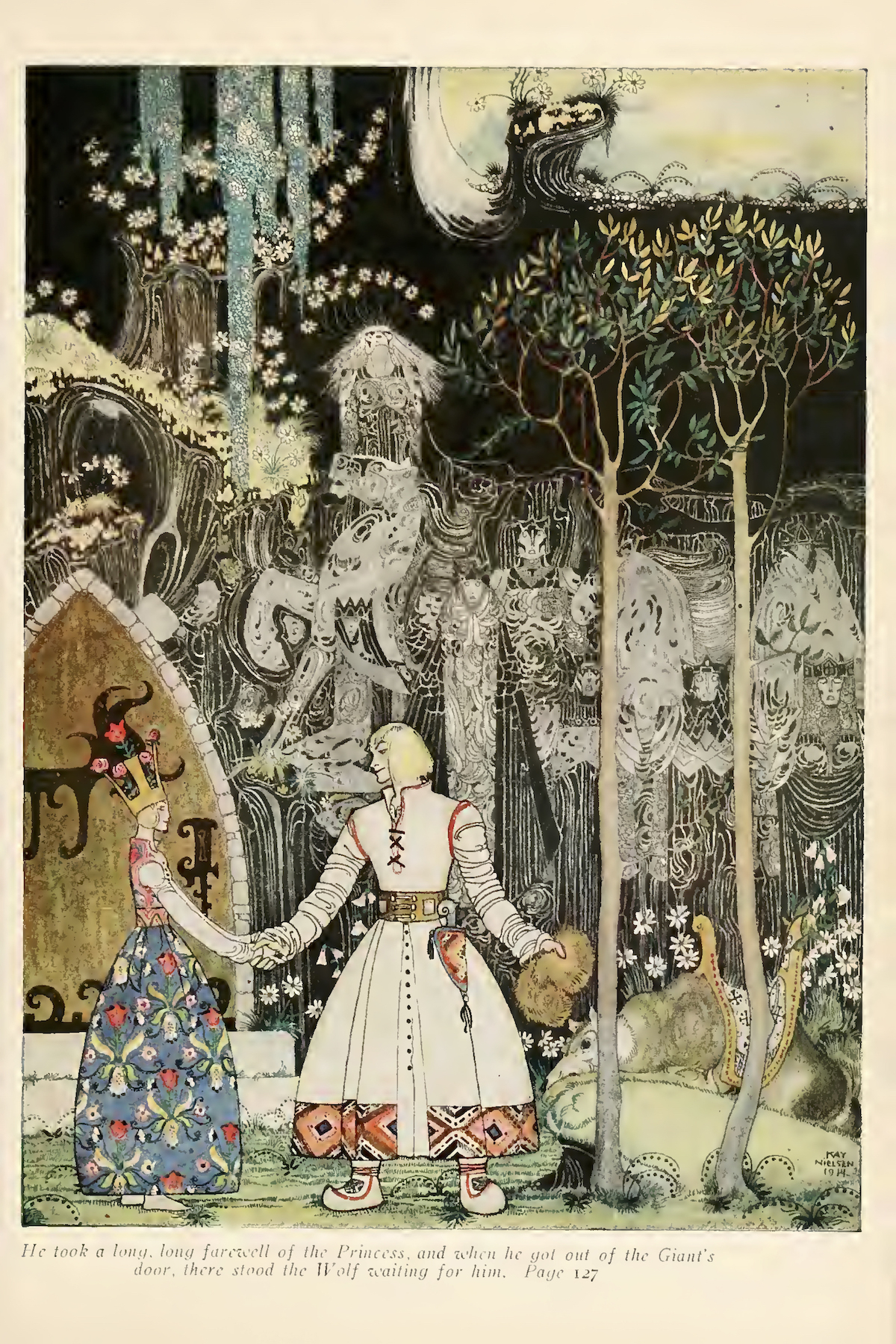
East of the Sun and West of the Moon, illustrated by Kay Nielsen. Print available.
East of the Sun and West of the Moon comprises fifteen fairy tales gathered by the Norwegians Peter Christen Asbjørnsen and Jørgen Engebretsen Moe as they criss-crosses the country in the mid nineteenth-century. Translated into English by George Webbe Dasent (1817–1896), the stories caught the eye of Jacob Grimm himself for their style that “surpasses nearly all others”.
Not all that surprising, then, to learn that Nielsen also illustrated Grimms Fairy Tales, Twelve Dancing Princesses, Hans Christian Andersen’s Fairy Tales, and others.
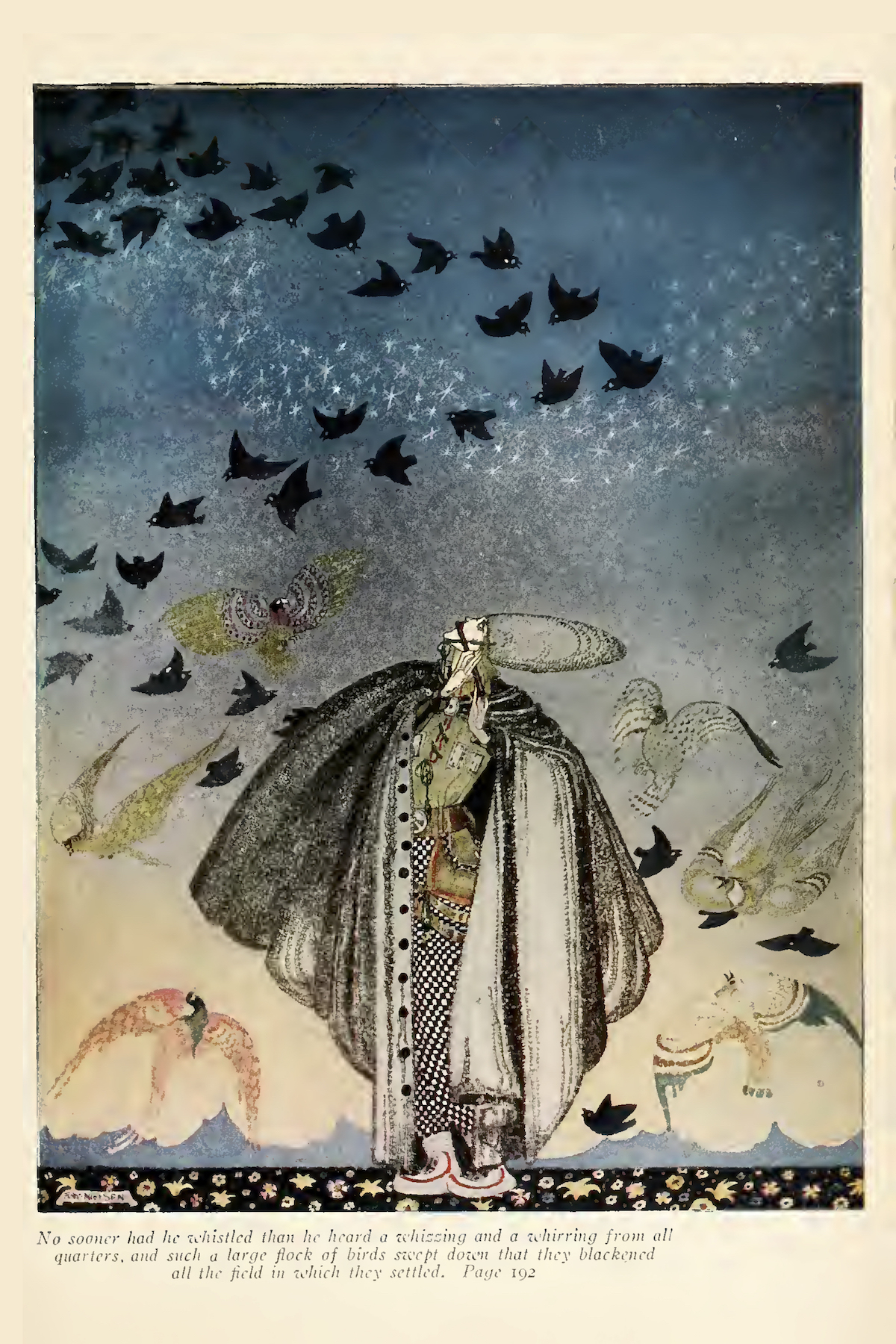
East of the Sun and West of the Moon, illustrated by Kay Nielsen. Prints
Nielsen was born in Copenhagen. His mother Oda was a singer with the Royal Theatre. His father, Professor Martinius Nielsen, was an actor and manager of the Dagmartheater. Raised in the arts, he studied in Paris at the Academie Julian then the Academie Colarossi from 1904 to 1912, and was inspired by the work of English artist Aubrey Beardsley (21 August 1872 – 16 March 1898).
In 1911, Nielsen moved to London in 1911 and he held a successful exhibition of a set of black and white drawings after Beardsley entitled The Book of Death. The show success led to his first book of watercolour fairytale illustrations In Powder and Crinoline (1913). More work, including East of the Sun and West of the Moon, before WWI erupted.
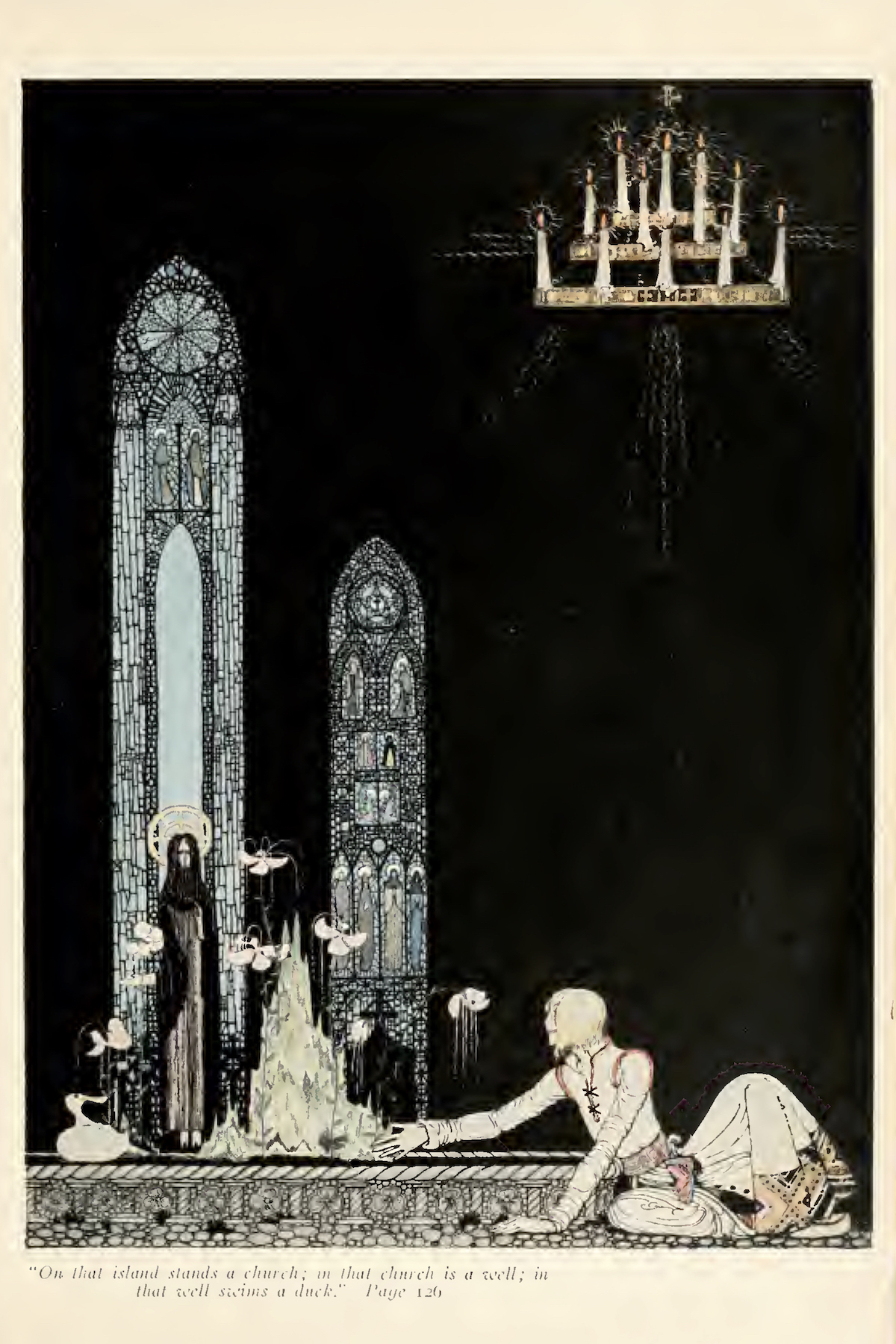
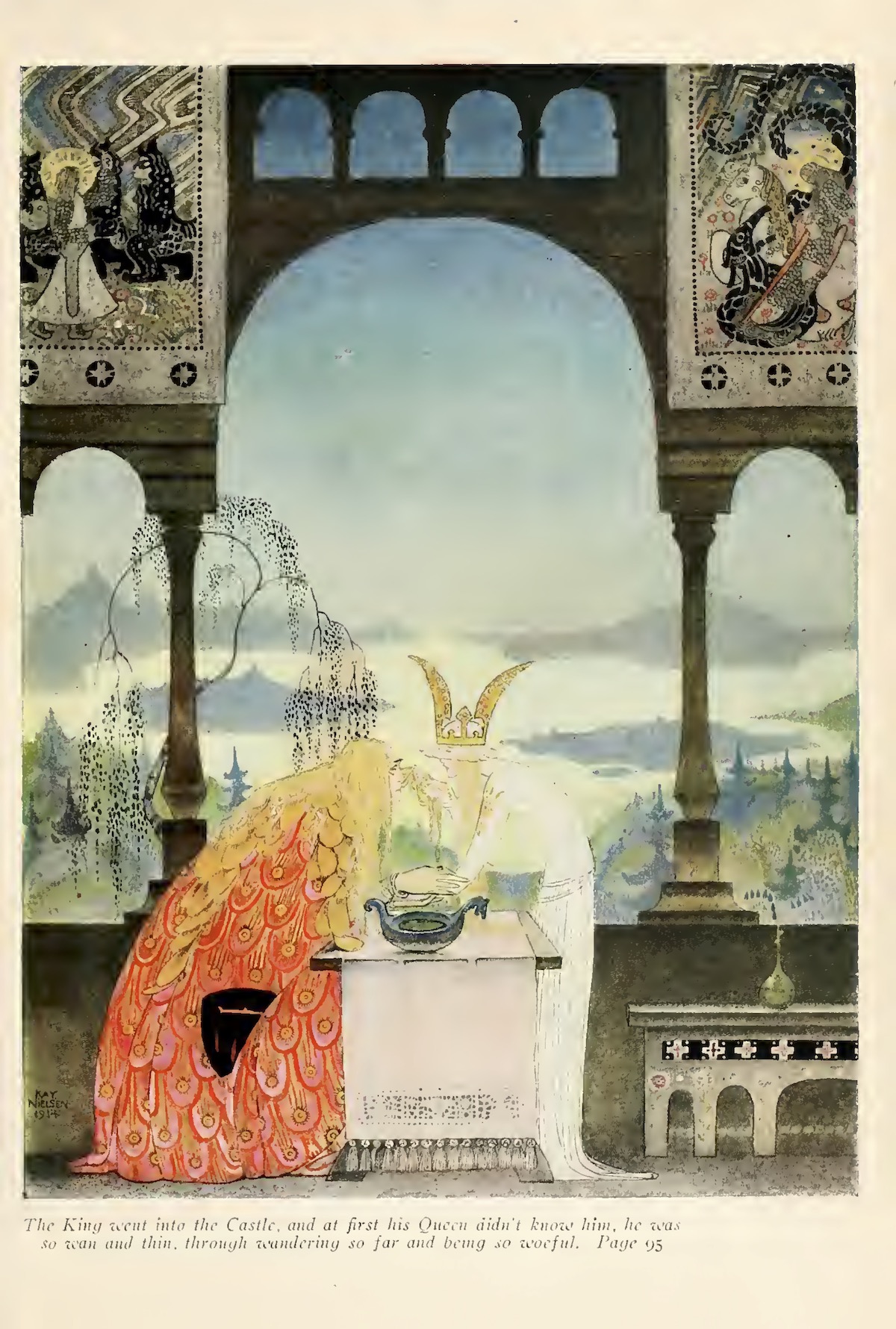
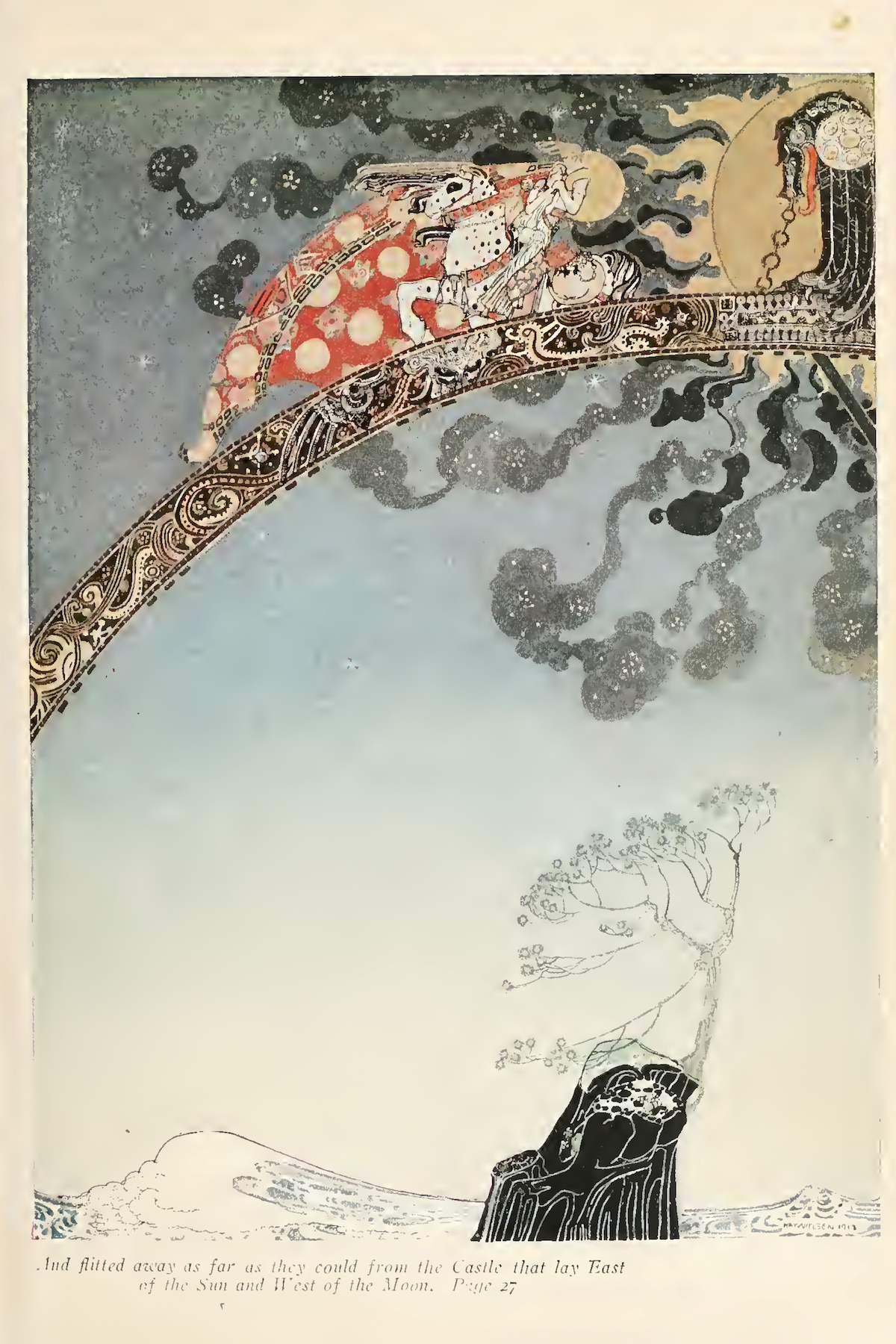
In 1917 Nielsen returned to Copenhagen and worked for the Danish State Theatre. Working with Johannes Poulsen, the pair staged a production of Aladdin at the Danish State Theatre. More stage shows followed, but Nielsen soon retuned to illustrating books for Hodder and Stoughton in London, including Fairy tales of Hans Andersen.
In the 1930s, Nielsen moved to the US, settling in Los Angeles where he worked as a set designer and illustrator for Disney Studios until he was laid off on 23 May 1941.
The following years were difficult for Nielsen and his wife as they lived a basic existence with only occasional commissions. Attempts at business ventures failed. Before her death to diabetes, his wife Ulla gave Nielsen’s illustrations to fellow artist and architect Frederick Monhoff, who tried to place them in museums. However, none – American or Danish – would accept them at the time. Kay Nielsen he died in 1957.
But, we’ve seen, his work live on.
Would you like to support Flashbak?
Please consider making a donation to our site. We don't want to rely on ads to bring you the best of visual culture. You can also support us by signing up to our Mailing List. And you can also follow us on Facebook, Instagram and Twitter. For great art and culture delivered to your door, visit our shop.
